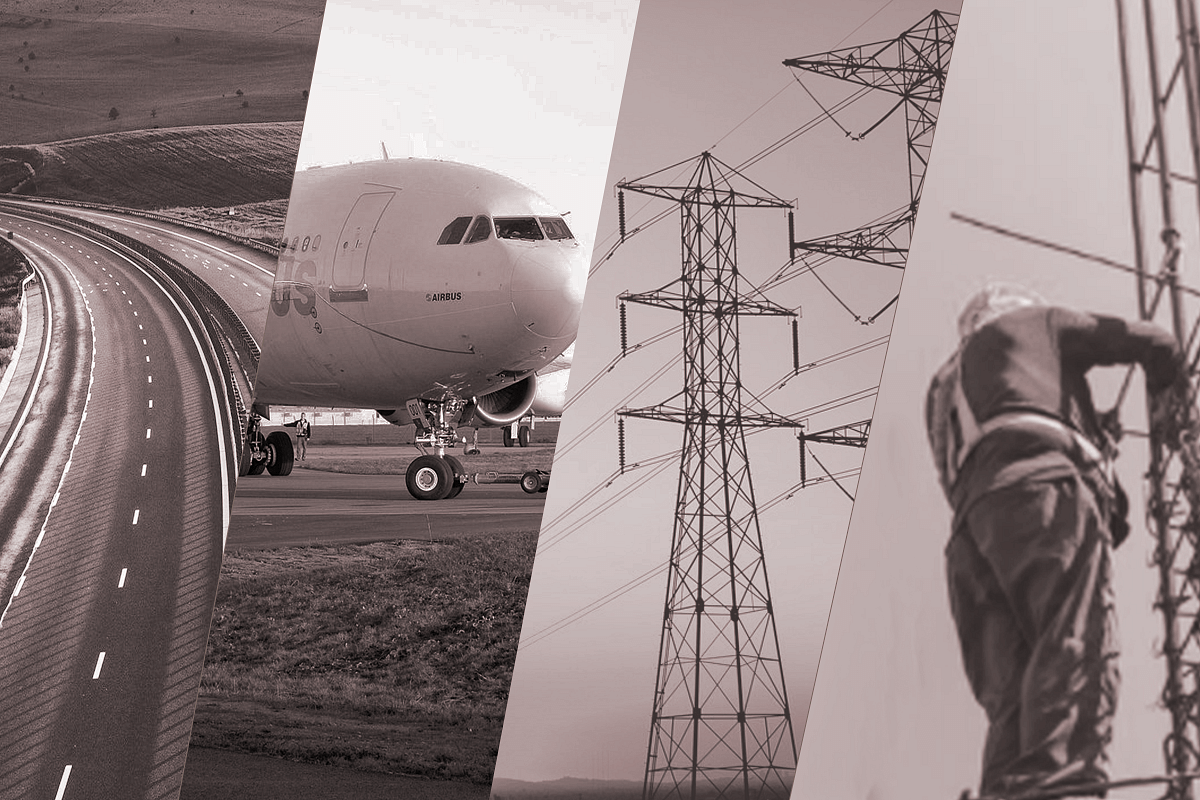Commentary
Recent Financials Of India's Bellwether Behemoth L&T Points To Positive Signs For India's Economy And Infrastructure
- Engineering and Construction behemoth Larsen & Toubro is generally regarded as the rough barometer of the state of the infrastructure sector and the general economy.
- A positive sign for the entire sector and the economy is that infrastructure spending has been recovering since the second half of FY21 according to L&T’s order flow numbers. L&T’s numbers indicate that India’s infrastructure sector and economy is coming back on track.

National Infrastructure Pipeline
Larsen & Toubro is the largest company in the Indian infrastructure space. With a diversified product offering across technology, construction, engineering, and manufacturing, the company is a rough barometer of the state of the infrastructure sector and the general economy.
Despite the second wave, the company’s domestic order book has grown by 12 per cent year-on-year to Rs 2.5 lakh crore in the first quarter of FY22, indicating that governments and companies are beginning to spend on infrastructure and capital expenditure. Order inflow has grown at 13 per cent during the same period. Unlike the previous year, construction activities have continued in India with minor hiccups. Therefore, it is unlikely that the infrastructure sector would be severely affected by Covid.
A positive sign for the entire sector and the economy is that infrastructure spending has been recovering since the second half of FY21 according to L&T’s order flow numbers.
A major part of L&T’s order book comes from government orders. As of FY21, the central government contributed around nine per cent of the order book, state governments contributed 31 per cent, public sector units (PSUs) contributed to 42 per cent and the private sector contributed to the balance 18 per cent. The data clearly shows that a most of India’s capital expenditure and infrastructure spending is coming from the government.
However, this isn’t something new; the past data indicates that L&T’s order book has always been dominated by government and PSU orders. In 2019, the central government contributed to 10 per cent of the company’s order book, while state governments contributed to 30 per cent of the order book. Similarly, PSUs contributed to 40 per cent and the private sector contributed to 20 per cent of the order book. A possible explanation is that PSUs operate in asset-heavy sectors such as mining, power and infrastructure that require a high capital expenditure spend.
According to the L&T, a major part of the private sector capex is limited to public infrastructure assets implying that some part of private sector’s contribution to the order book has indirectly come from public spending. The private sector has suffered from low capacity utilisation, resulting in lower capital expenditure. Unless consumption increases, the private sector is unlikely to invest large amounts on expansions.
According to the management, FY21 had a lacklustre first half, but demand rebounded quickly during the second half of the year. It expects FY22 to be similar with the second wave coinciding with the first quarter of the fiscal. However, brokerages do not expect the company to be affected as construction projects are continuing unlike last year.
L&T’s margins in the infrastructure space have come down from around 8-10 per cent from around 10-12 per cent the company was earning in the past. Competitive pressures have induced the fall in profit margins. Increasing competition in the infrastructure sector is welcome, as it lowers the costs of public projects, however, in the aggressive bidding has resulted in large losses and defaults in the infrastructure sector. Higher commodity prices have also pushed down the margins for infrastructure companies.
The company has been highly conservative during the pandemic period and has focused on keeping its balance sheet ready for further turmoil. It has been moving out of non-core businesses to focus solely on the engineering, procurement and construction (EPC) space.
While the diversifications had worked out well, the Covid crisis and the need to focus on a few businesses propelled the company to shed off extra baggage and become leaner. The company has emerged through Covid with the strongest balance sheet in a decade. Net debt-to-equity improved stood at 1x in FY21 compared to FY20 despite a tough year.
Overall, L&T’s numbers indicate that India’s infrastructure sector and economy is coming back on track. The company has strengthened its balance sheet during an extremely challenging period which has been a positive surprise for the investor community. The increasing order flow clearly shows that governments and companies in both India and abroad are looking to continue spending on infrastructure expansions despite the challenges Covid poses. However, on a macroeconomic level, the fact that a major part of India’s capital expenditure and infrastructure spending is driven solely by PSUs and the government is worrisome. Hopefully, as consumption rises, India should also see a higher capital expenditure from private companies.
Support Swarajya's 50 Ground Reports Project & Sponsor A Story
Every general election Swarajya does a 50 ground reports project.
Aimed only at serious readers and those who appreciate the nuances of political undercurrents, the project provides a sense of India's electoral landscape. As you know, these reports are produced after considerable investment of travel, time and effort on the ground.
This time too we've kicked off the project in style and have covered over 30 constituencies already. If you're someone who appreciates such work and have enjoyed our coverage please consider sponsoring a ground report for just Rs 2999 to Rs 19,999 - it goes a long way in helping us produce more quality reportage.
You can also back this project by becoming a subscriber for as little as Rs 999 - so do click on this links and choose a plan that suits you and back us.
Click below to contribute.
Latest